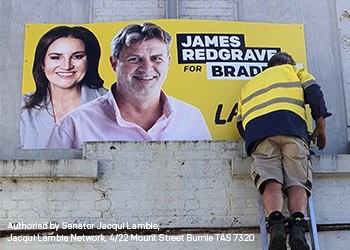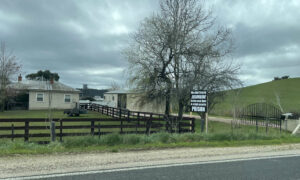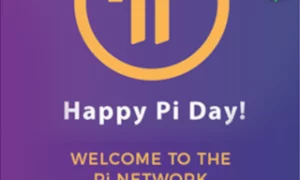A scenario plan for the Hobart Light Rail Metro by Seán Deany. He is a former resident and regular visitor to Hobart, currently living in Melbourne and transport advocate and novice transport planner.
In preparedness for challenging times ahead – when concerning increased global warming and decreases in fossil fuel supply, a low impact economy is now essential and fast becoming a pressing need. One way into achieving this could be better transport network planning leading to a major retro-fit of our cities.
Light rail transit (LRT) is one of the fastest modes of public transport infrastructural development worldwide. Its origins go back to the late 1960s and 1970s when a number of German cities in particular coupled trams and ran them on fully or partial ROW lines. LRT became an effective and economical method for meeting public transit needs through pre-metro or semi-metro transportation systems.
In Hobart there has been much discussion about reintroduction of trains or LRT to the city and particularly its northern suburbs. The HNSR (Hobart Northern Suburbs Railway) would run battery powered trains from Mawson Place at Constitution Dock and out to at least as far as Granton along the Main Line rail corridor. After much anticipation from the public, there is the PB (Parsons Brinckerhoff) Hobart Light Rail Cost Estimate: Report 2 of May 2009 made for the Tasmanian DIER. Their study is for overhead power LRT vehicles to run from the University of Tasmania to Bridgewater, via the Hobart CBD, inner northern suburbs and much of the Main Line rail corridor from Moonah and beyond.
While any one of or even a combination of these two proposals would be a positive step forward into the introduction of rail guided vehicles in Hobart, Seán’s scenario model is for a fully integrated LRT network for Greater Hobart.
The envisioned Hobart LRM (Light Rail Metro) in its entirety would be a north / south / east running LRT network (standard gauge) totalling 50KM in route length. The network would have up to 45 transit stops / stations in total. In his scenario proposal for the Hobart LRM there are 2 lines – these being the Green Line and the Gold Line. The Green Line would serve the entire north / south axis of the network from at least as far north as a Bridgewater Civic terminus to a Kingston Central terminus, via the CBD and the University of Tasmania – Sandy Bay Campus. The Gold Line would primarily serve the Eastern Shore suburbs – running from a Rokeby Village terminus, via Rosny Park and a new Tasman Bridge into the CBD, from where it would share the Green Line alignment between a sub-surface Hobart Central Stn, located beneath the Elizabeth Street Bus Mall as inter-modal change and as far as a Glenorchy transit stop.
The Hobart LRM would therefore incorporate a network of up to 5 bi-directional rail tunnel segments, totalling up to 6.65KM in network length. These would be composed of 6m diameter bore / cut and cover tunnelling to enable a seamless transit route under the Central Business District. There would be 5 micro-metro sub-surface stations in total – North Hobart, Warwick Street, City North, Hobart Central and St Davids Park. Tunnelling would also allow for LRT alignment from the University transit stop to the Southern Outlet at Proctors Saddle from where the line would run en route to the Kingston Central terminus.
The Hobart LRM would serve as the main transport artery for Greater Hobart, serviced by pulsed timed feeder buses, allowing rapid interchange and importantly transforming the Tasmanian capital into a truly Transit-orientated City.
Recently he has completed a detailed scenario plan in web form of the Hobart LRM . It can be found by going to www.hobartLRM.blogspot.com
• Peter Bright, comment:





























Philip Lowe
April 6, 2011 at 11:32
Pretty pictures,nothing more.Did you say that this guy is a novice transport planner?So where is the bike lane on Sandy Bay Rd.Brewery,pissup,
organise,bike lane,Sandy Bay Rd.Make up a well known phrase or saying from these words.Oh and while your at it,include Battery Point Foreshore Walkway as well.I’ve reached old age waiting for action.
Peter Bright
April 6, 2011 at 12:46
Wonderful!
Chris Harries
April 6, 2011 at 14:08
As said in a previous post to TT, if we had a fully fledged public transport system in Hobart prior to 1970, thus a modern version is possible when oil prices mitigate against our car culture. Not only possible, it has to happen.
This blueprint may not happen, but full marks to Seán for his vision. Whilst oil is still fairly cheap we won’t see action, in fact we will see more appeals for extending highway infrastructure. But that era may hit a brick wall soon.
So nice to know that there are creative people around envisaging pathways through the energy mess.
bazzabee
April 6, 2011 at 14:30
I was once a novice brain surgeon and well recall the problems I had being taken seriously.
And so my heart, as should yours, goes out to the author who admits he is a novice transport planner he has to start somewhere and you have to agree he draws a good map.
Why is that no one is willing to trust a novice with either their brain or their hard earned money. Shame on all of you I say – a pox on the skeptics and those who Tasmanian’s who won’t take a risk. ;-}
Tom Nilsson
April 6, 2011 at 14:50
I agree with rail for the northern suburbs because there is already a rail line there.
But rail for Kingston would not make sense. The Southern Outlet adequate, it just needs to be used more efficiently by having more people travel on buses instead of in cars.
Talk of building lengthy tunnels under Hobart is pie in the sky.
peter mackenzie
April 6, 2011 at 16:22
Full marks to Sean for this concept.
One suggestion I have is for Sean to explore further whether you can viably use battery (or other oil alternative) powered bi-modal bus-size vehicles that can conveniently shift from road to the rail section of the network.
The idea being that if Sean’s vision was to be adopted, it would probably be built in stages.
Road vehicles that could shift onto the rail sections would eliminate the need for passengers to change from road to rail, while further rail sections awaited completion, with instead the vehicle doing that.
I think with an ageing population, people with disabilities, parents with prams and so on, the seamless nature of that would be much preferable.
I know that in Germany light rail can run on heavy rail on certain routes, while in Australia trucks that convert to rail have been used, and various other multi-use vehicles have been developed and tried with varying success.
And in any case, good luck Sean if you want to pursue this from concept to reality.
Peter Mackenzie
Transport Develpment and Road Safety Researcher
Westbury, Tas
Stan
April 6, 2011 at 16:38
I too think that rail to kingston is not the best option given the good roads. What is needed there are more buses and an HOV lane system.
My daughter and I have conducted informal counts (with large sampling). The number of single occupant vehicles is usually around the 90% mark.
Max Bound
April 6, 2011 at 18:10
The sooner we can pressure parliaments and local government to start addressing the needs of the many people now, and most of us in the relatively near future the better. Full marks to Sean Deaney for his contribution. The public money now spent on speed encouraging roads that most of us will not be able to afford to use in our cars in the relatively near future would be much better spent on establishing convenient public transport networks.
Robert LePage
April 6, 2011 at 21:04
Tom Nilsson:
I agree that rail for Kingston does not make sense but Trolley buses do.
They are VERY good on hills and only require the overhead wires to operate. They can even be built to travel short distances on built in batteries to make journeys to connect the ends of two lines ETC.
They also ran in Hobart many years ago. The Southern outlet is about to be stressed even more when the Kingston bypass is finished.
As for the LRT it really would be better to run it on overhead electricity, again trolley buses could run on roads and on rail extending their use.
It will fail to get off the ground until the price of oil rises sufficiently to hurt the hip pocket.
It would help to get it running by REDUCING parking in Hobart.
Peter Bright
April 6, 2011 at 22:39
There are some fascinating pictures of the train/tram concept here ..
http://www.parrypeoplemovers.com/pdf/2011-04-01-tram-train-brochure.pdf
.. where the three-carriage people movers use flywheels for energy storage instead of batteries.
No unsightly overhead wire is necessary because the train/tram flywheels are “recharged” (spun up to speed) at each stop.
Robin Halton
April 7, 2011 at 17:25
Looking into the future this inter city -surburban light rail concept has more value overall for the Greater Hobart area than the Jan Gehl fairy tale concept to Copenhagenise Hobarts CBD.
It is a pity that the Hobart City Council cannot look beyond their precious CBD enclave, be reasonable about it and visualise the bigger picture for Hobart.
The HCC, Kingborough and Huon Councils’ as a matter of urgency need to look with DEIR at solving the bottleneck from the Lea- Mt Nelson to the Davey and Macquarie St Highway network.
Population growth south of Hobart is rapidly expanding with many dependent on commuting to Hobart and beyond the city for work each day.
In the future, one could consider overhead electric rail along routes of difficult terrain which could be used to enhance both commuter and visitor experience,(Hobart – Mt Nelson- Lea- Kingston- Blackmans Bay- Margate).
We need a State Governments that actually need to think beyond their narrowed limitations currently based on spin.
Chris Harries
April 7, 2011 at 21:00
Robin (#11),
Agreed, one of the problems we have is that greater Hobart is not managed very well as an entity. Each council has its own patch and there is a level of competition between councils and between geographical and commercial sectors.
To a very limited extent this has been recognised and dealt with via the Southern Councils Authority (STCA) and this is where an integrated approach may find a home base. I use the word ‘may’ with some reservation because Hobart’s management is generally fractured. I would prefer an amalgamation of the three major councils but I know that is not a popular position.
Hobart Council should be applauded for at least putting a people friendly city prospect out for public comment. Nothing may come of it, but at least it will engender some thinking outside our rather stifled car-centric thinking.
I’m not optimistic about that project’s success, partly out of direct experience. My local community has been campaigning for some very basic traffic calming measures now for many years. Council engineers agreed. Plans were drawn up. Budget was agreed to. The community was formally advised by several letters that the traffic calming devices would be installed. But that tiny little advance – to make one little suburban street more people friendly – has been stopped in its tracks by legal action.
I am suggesting that upscaling this tiny exercise to include a whole city is fraught with problems unless the process itself can help to dissolve motorists’ dread that their freedom to move will be curtailed. This is not Copenhagen, it’s Tasmania and in this respect we are still very backward. We have a very long way to go.
Robin Halton
April 8, 2011 at 02:46
#11 Chris, It is a pointless exercise for the Hobart City Council to pay out $320,000 to a world acclaimed Urban architect Jans Gehl in an to attempt to manipulate our miniscule Hobart CBD when the future transport movements in the Region are either ignored or planned in a hotch potch manner and may never happen.
The HCC are so daft they cannot even provide a basic Walkway- Cycle link from Marieville Esplanade following the shoreline around the Battery Point to Castray Esplanade, instead Jeff Briscoe showed us a plan of an elaborate structure which would cost the earth! I was driving along the Brooker a few days ago when I spotted a pile driver on a large lighter, it occured to me this is for the ridiculous walkway along side Elwick Bay when the Glenorchy City Council already a pretty good shore based walkway. This was Duncan Kerr’s gift to waste Federal money ($4M?) on a useless project on a bitterly exposed site that no local or visitor would use on the many cold days that the site is well known for.
Using your words Chris ” This is not Copenhagen”, correct nor is Hobart expansive, flat or heavily populated with inner city dwellers that dont need cars for daily transport. They either walk or pedal their single speed bikes out of harms way from vehicular traffic.
I see no logic in ” putting the cart before the horse. Greater Hobart is the bigger picture and that needs addressing first and foremost.
It is not that we are backward so much it is more that the Green idealogy for Central Hobart is too focused on being seen as “anti car” and fails to complement the reality that we are now a Greater Hobart spread out over a wide area on both sides of the Derwent and our CBD is very, very small in comparison to the remainder of the region.